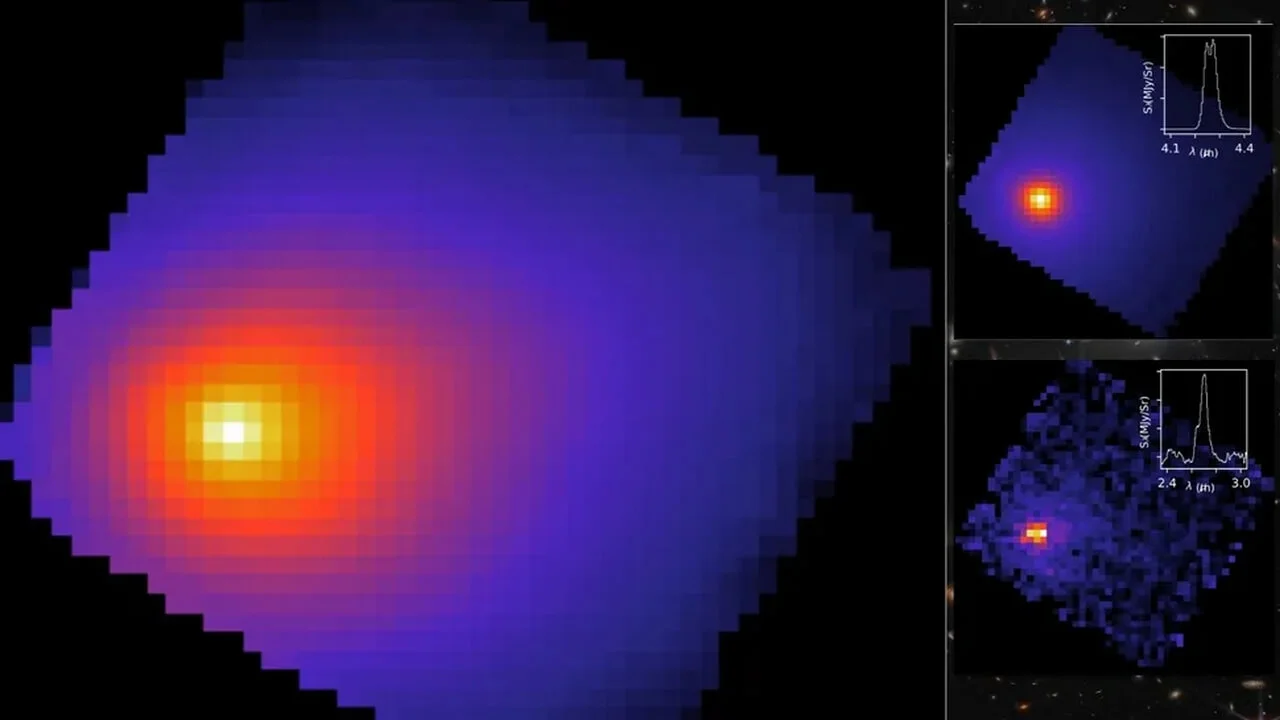James Webb Space Telescope Reveals Surprising Secrets of Interstellar Comet
Astronomers using the James Webb Space Telescope uncovered unusual chemistry in interstellar comet 3I/ATLAS, offering new clues about its origins.

The James Webb Space Telescope (JWST) has captured its first observations of 3I/ATLAS, a rare visitor from another star system. Using its Near-Infrared Spectrograph (NIRSpec), JWST examined the comet on August 6, 2025, detecting details about its chemical makeup and behavior as it travels through the solar system.
A Rare Interstellar Visitor
3I/ATLAS was discovered on July 1 by the ATLAS survey telescope in Hawaii. It is only the third known interstellar object to pass through our cosmic neighborhood, following 1I/ʻOumuamua in 2017 and 2I/Borisov in 2019. Unlike most comets, which formed in our own solar system, these objects originated around distant stars before being ejected into interstellar space.
What JWST Found in the Comet’s Halo
Like other comets, 3I/ATLAS began to release gases as it warmed while approaching the sun. This process, known as outgassing, creates the characteristic halo or coma surrounding the icy body. JWST identified carbon dioxide, water, water ice, carbon monoxide, and the sulfur-containing gas carbonyl sulfide within the coma.
The most surprising discovery was the unusually high ratio of carbon dioxide to water—the highest ever recorded in a comet. This suggests that 3I/ATLAS may have formed in conditions very different from those that shaped comets in our solar system.
Possible Origins of Its Unusual Chemistry
Researchers propose two explanations for the abundance of carbon dioxide. One possibility is that the comet’s core is naturally rich in this gas, perhaps due to exposure to stronger radiation in its home system. Another theory is that 3I/ATLAS formed near the “carbon dioxide ice line” in its parent star’s protoplanetary disk, where temperatures were cold enough for carbon dioxide to freeze into solid ice.
Adding to the mystery, JWST detected relatively little water vapor compared to carbon-based gases. This could mean the comet’s interior prevents heat from reaching its icy core, limiting how much water can escape into space.
A Window Into the Distant Past
Previous studies suggested that 3I/ATLAS may be about 7 billion years old, making it significantly older than our solar system. Its steep orbital path indicates that it likely originated in the Milky Way’s thick disk, a region populated by ancient stars, rather than the younger thin disk where the sun formed.
By studying such interstellar objects, astronomers can compare how comets formed in other star systems with those born around the sun 4.6 billion years ago. Each new observation provides insights into the chemical environments of distant planetary nurseries.
What Comes Next
Scientists plan to continue monitoring 3I/ATLAS until it departs for interstellar space once again. With JWST’s powerful instruments, researchers hope to uncover even more about this ancient traveler before it slips back into the dark between the stars.
This article has been fact checked for accuracy, with information verified against reputable sources. Learn more about us and our editorial process.
Last reviewed on .
Article history
- Latest version
- Last updated by Dayyal Dungrela, MLT, BSc, BS
- Peer reviewed by Dr. Arjun Patel, PhD
Reference(s)
- Cordiner, Martin., et al. “JWST detection of a carbon dioxide dominated gas coma surrounding interstellar object 3I/ATLAS.”, 25 August 2025 Zenodo, doi: 10.5281/zenodo.16941949. <https://doi.org/10.5281/zenodo.16941949>.
Cite this page:
- Posted by Aisha Ahmed